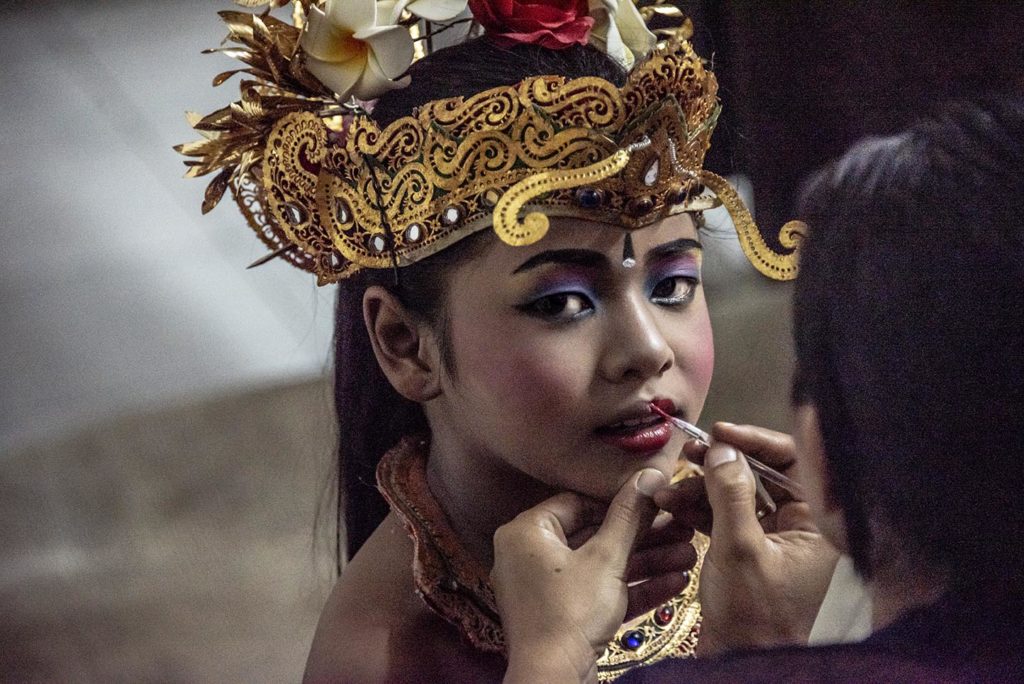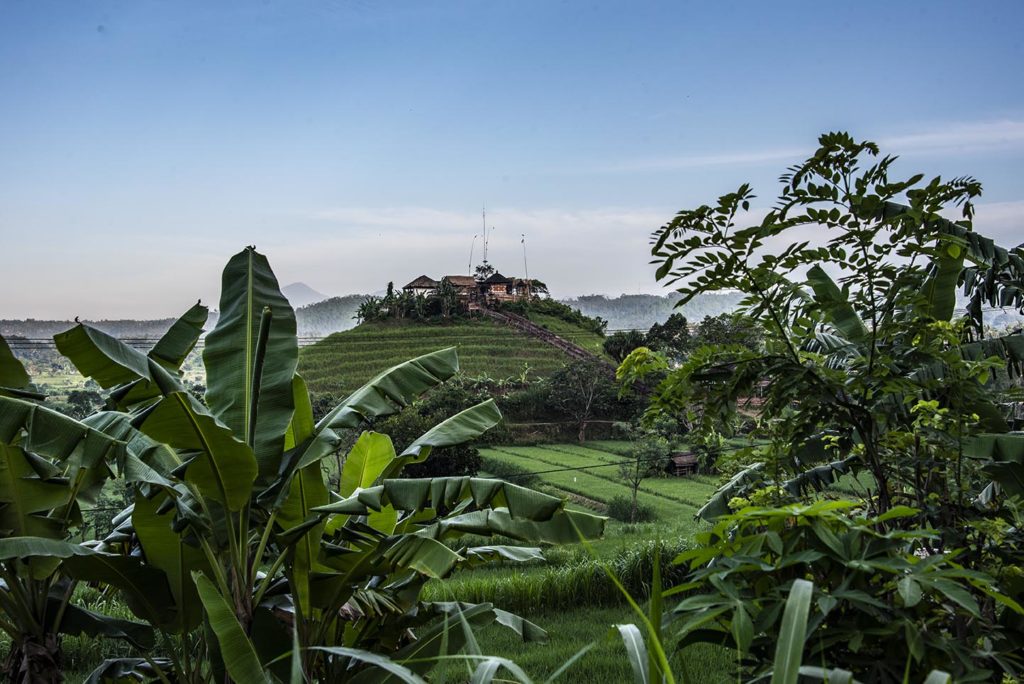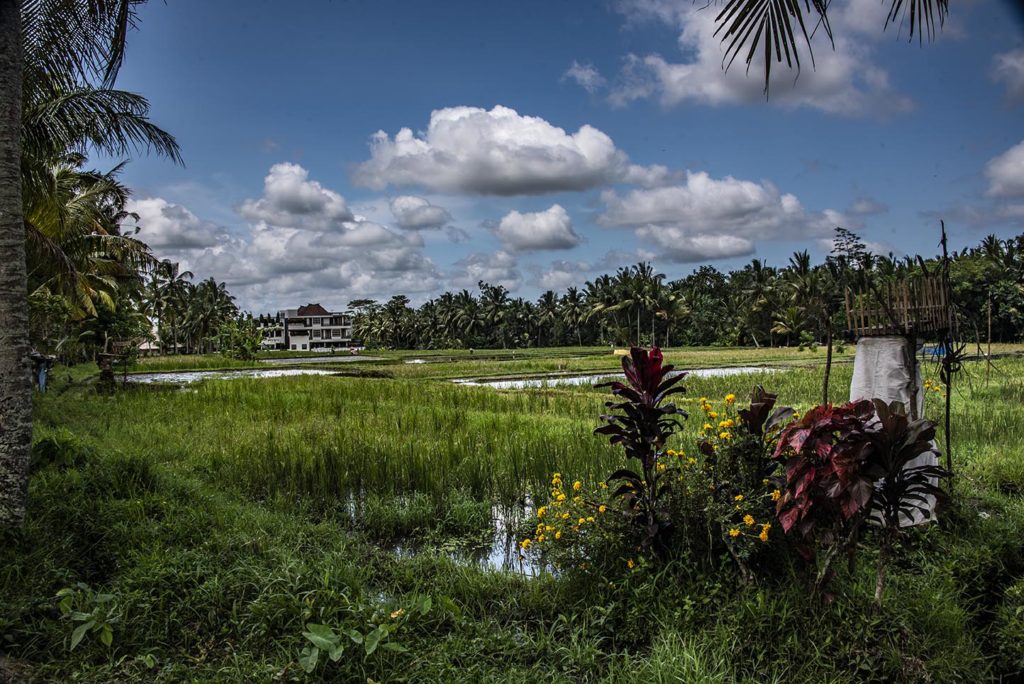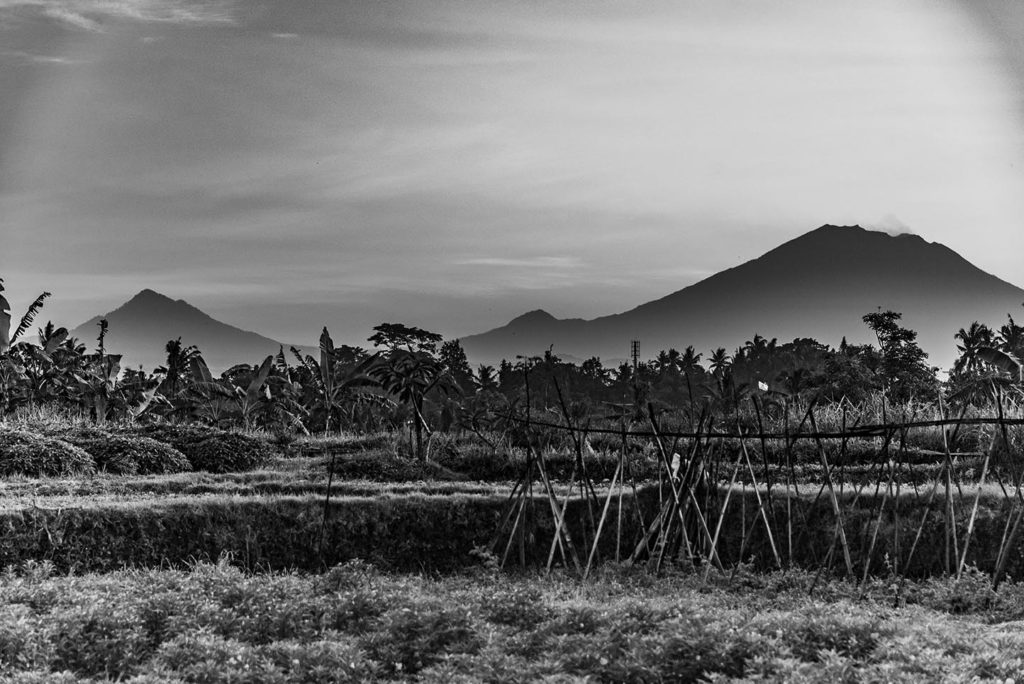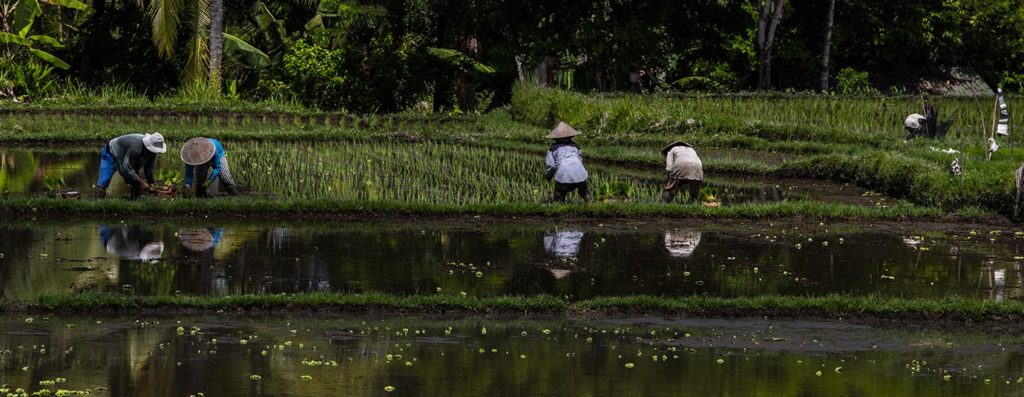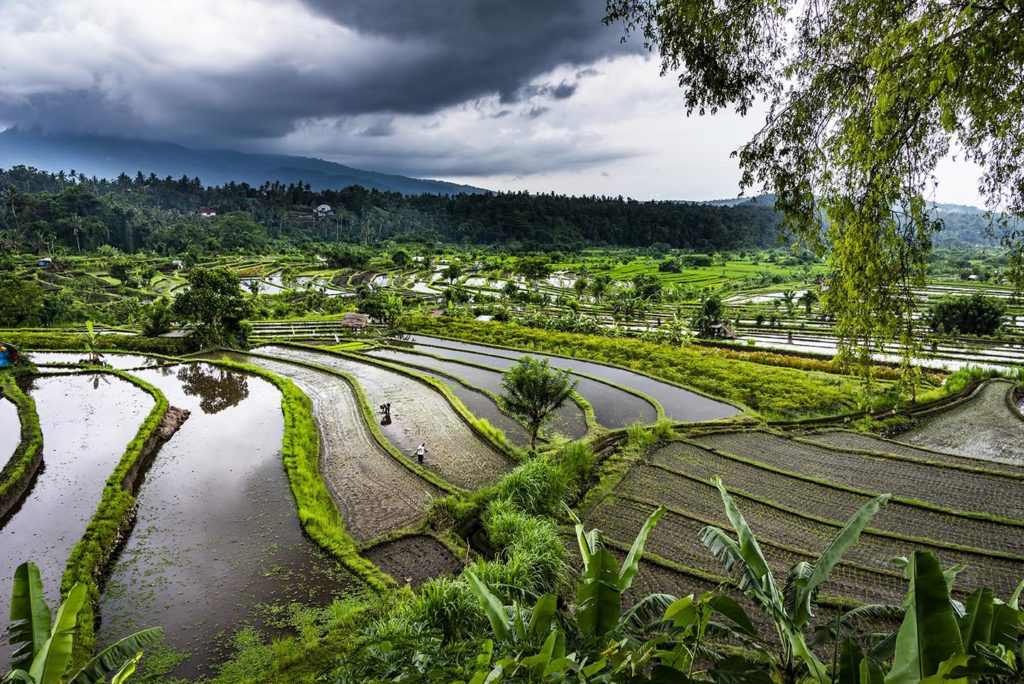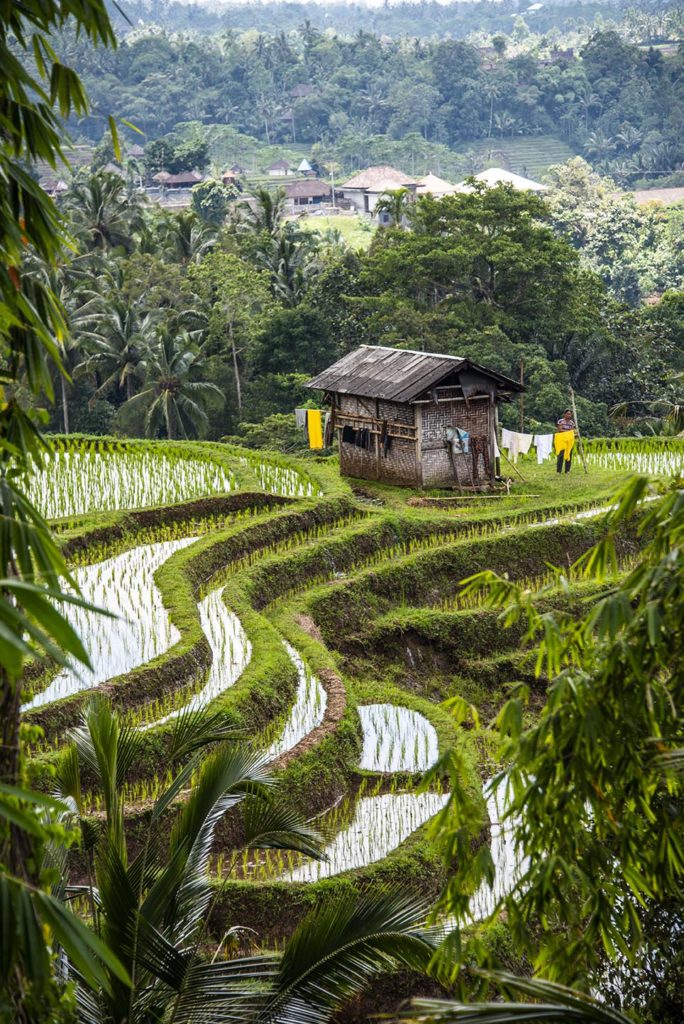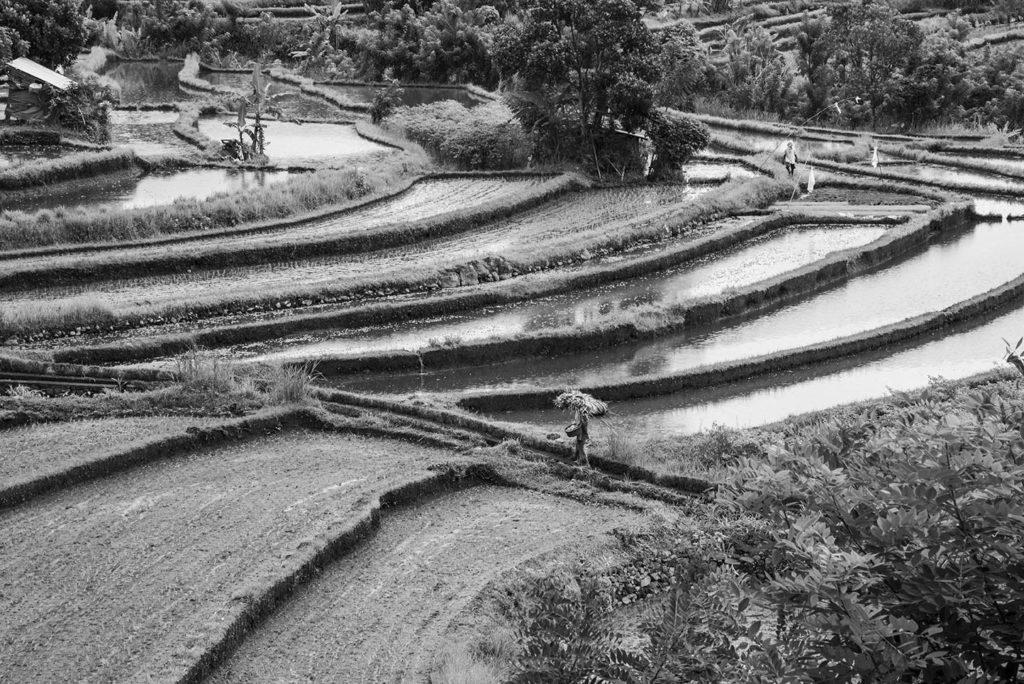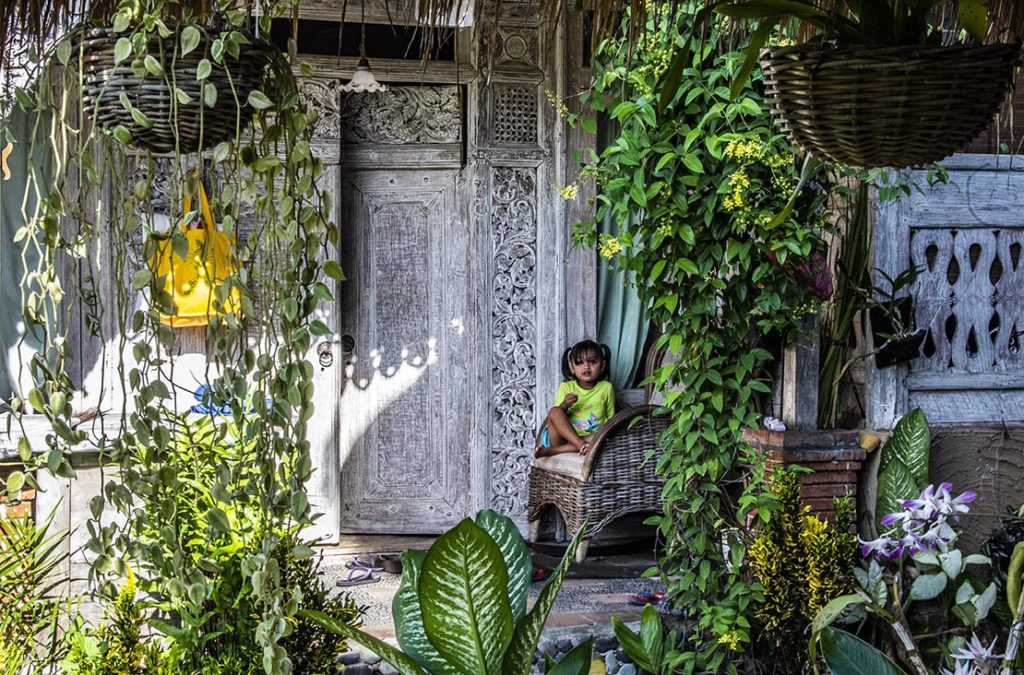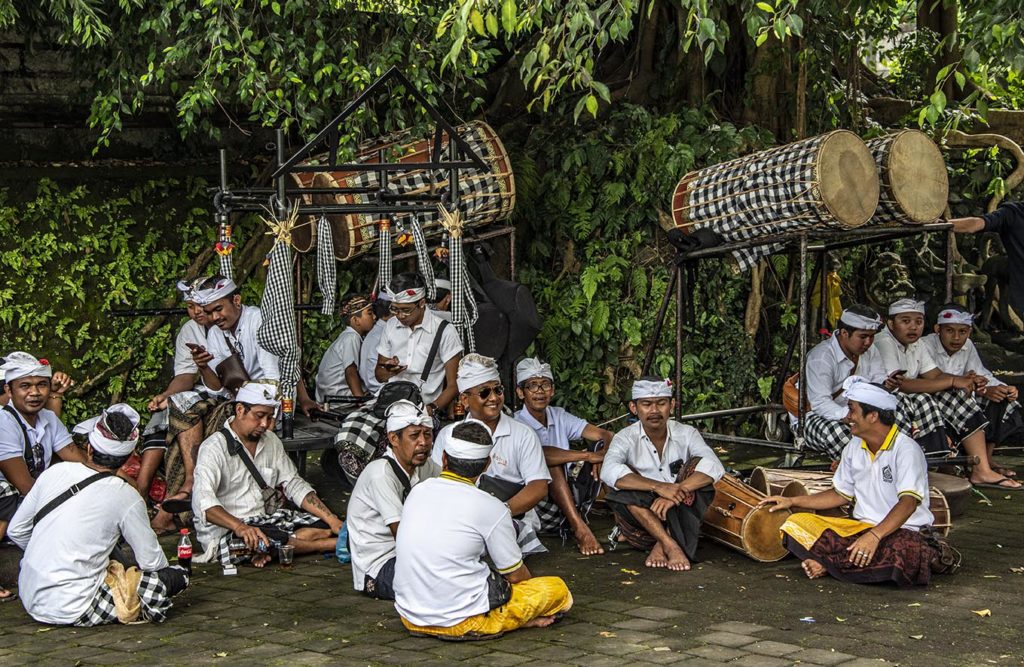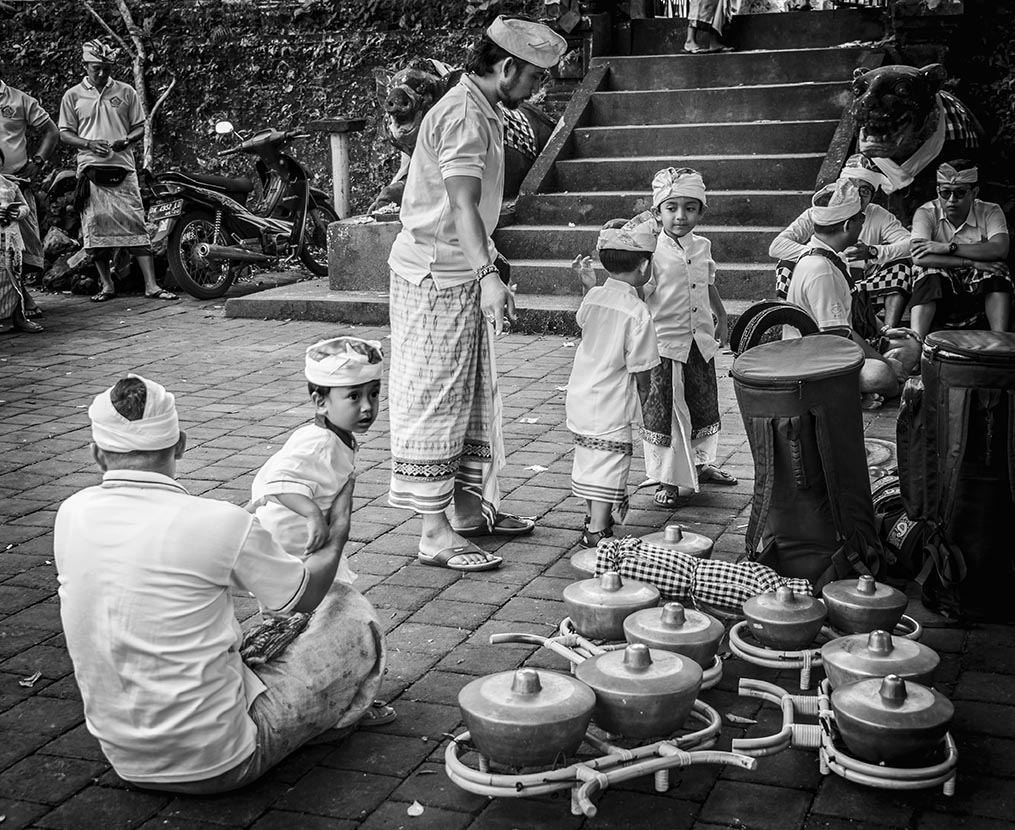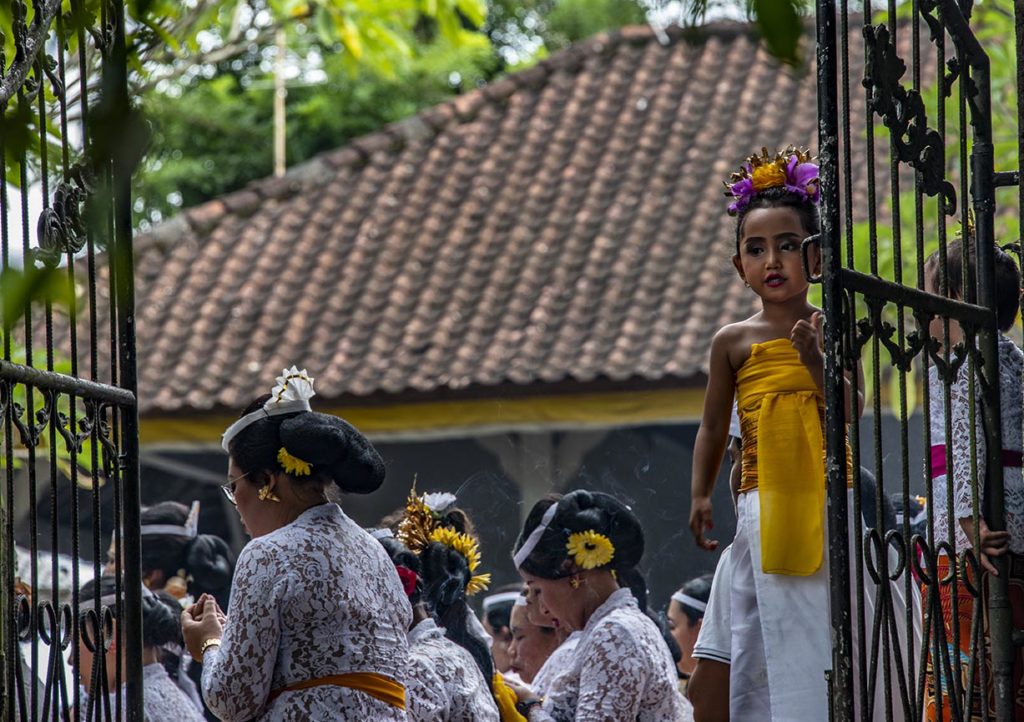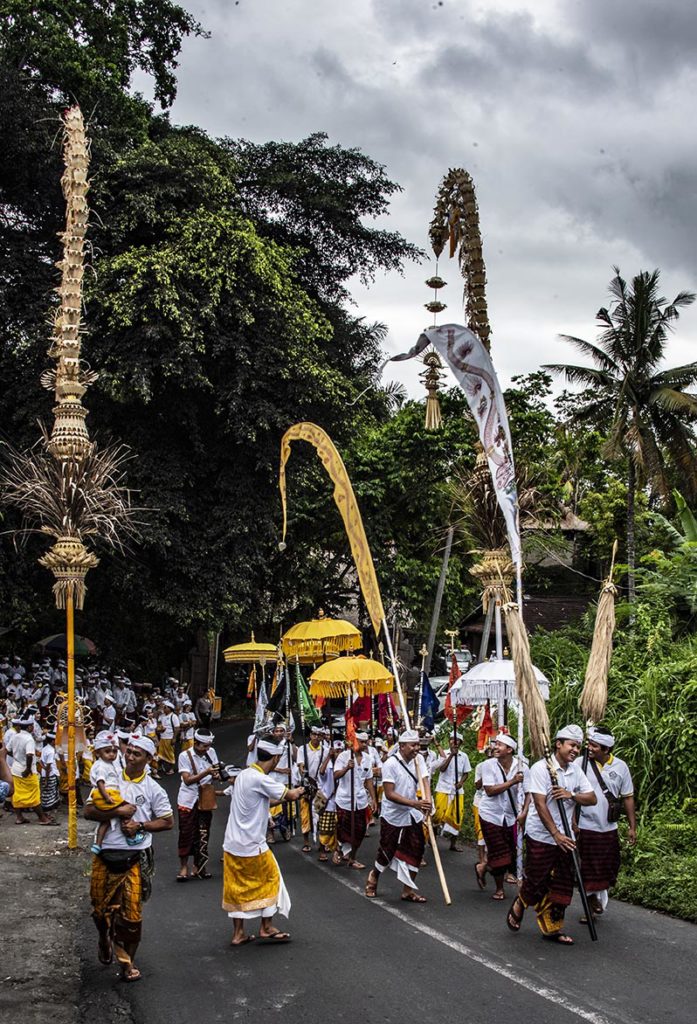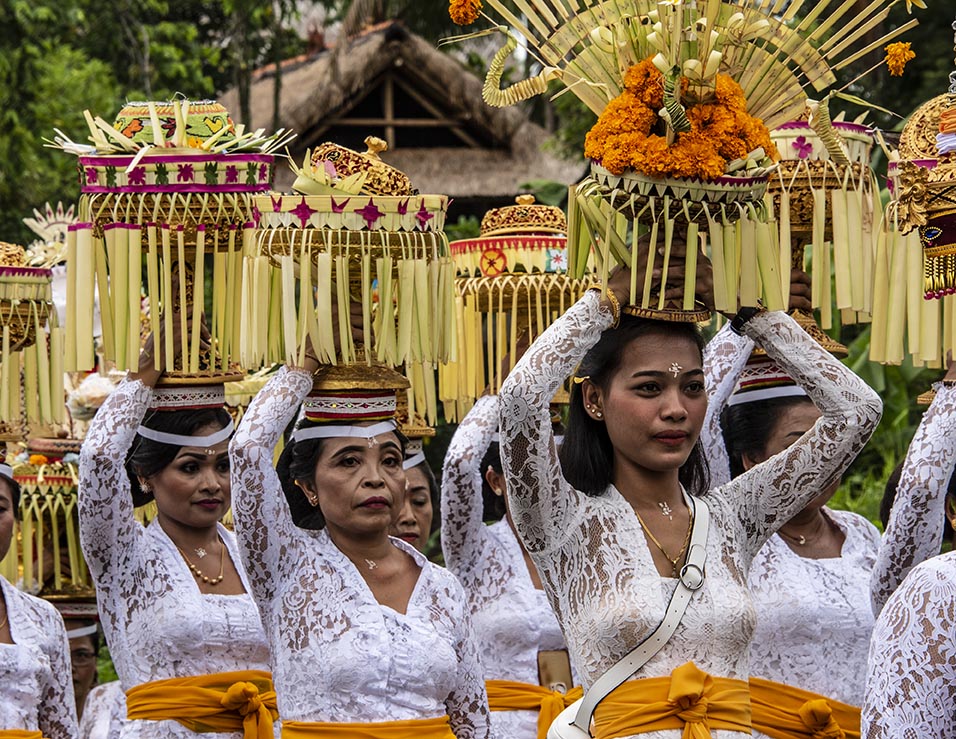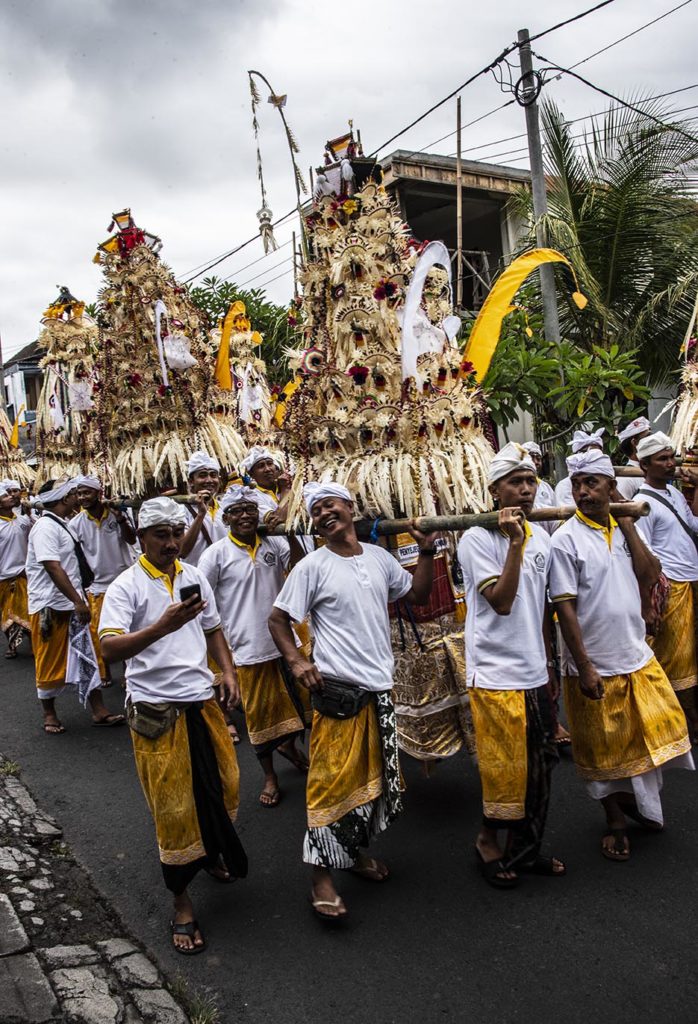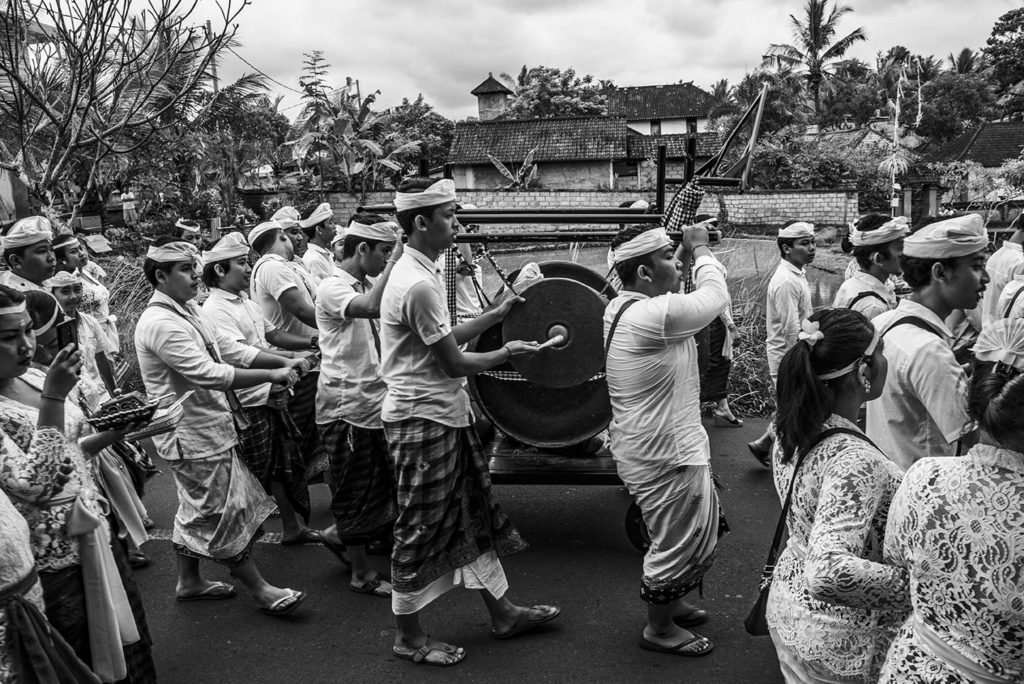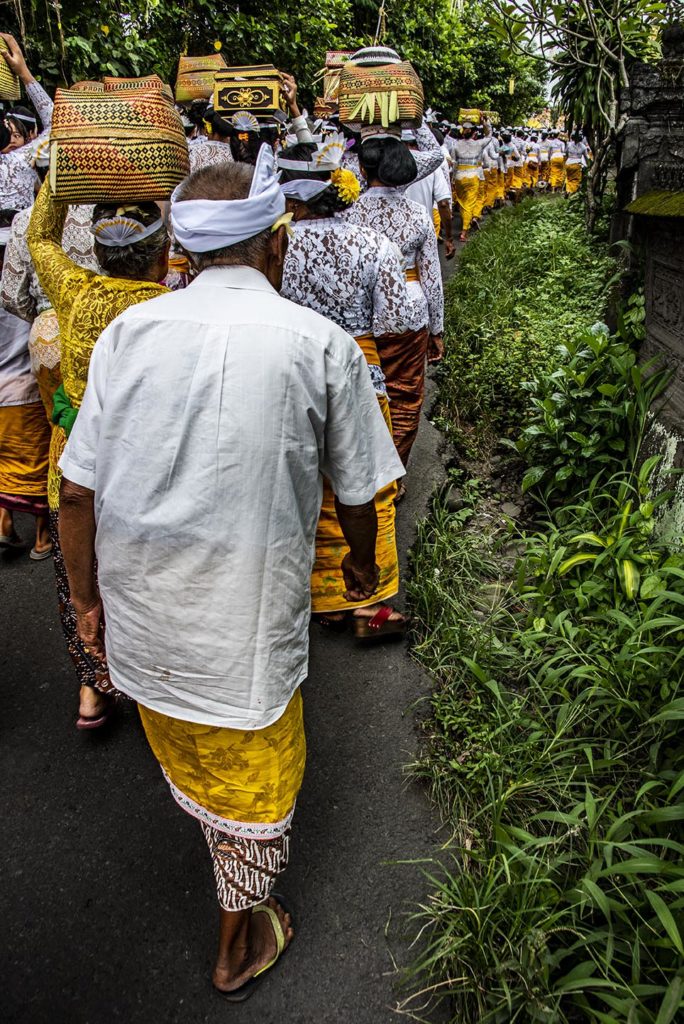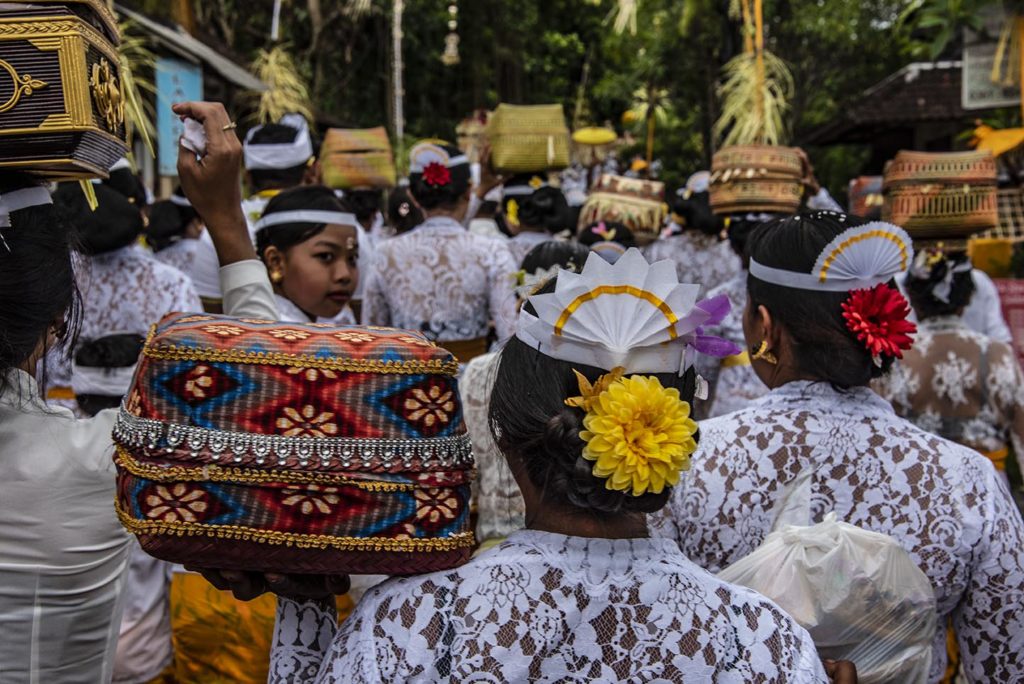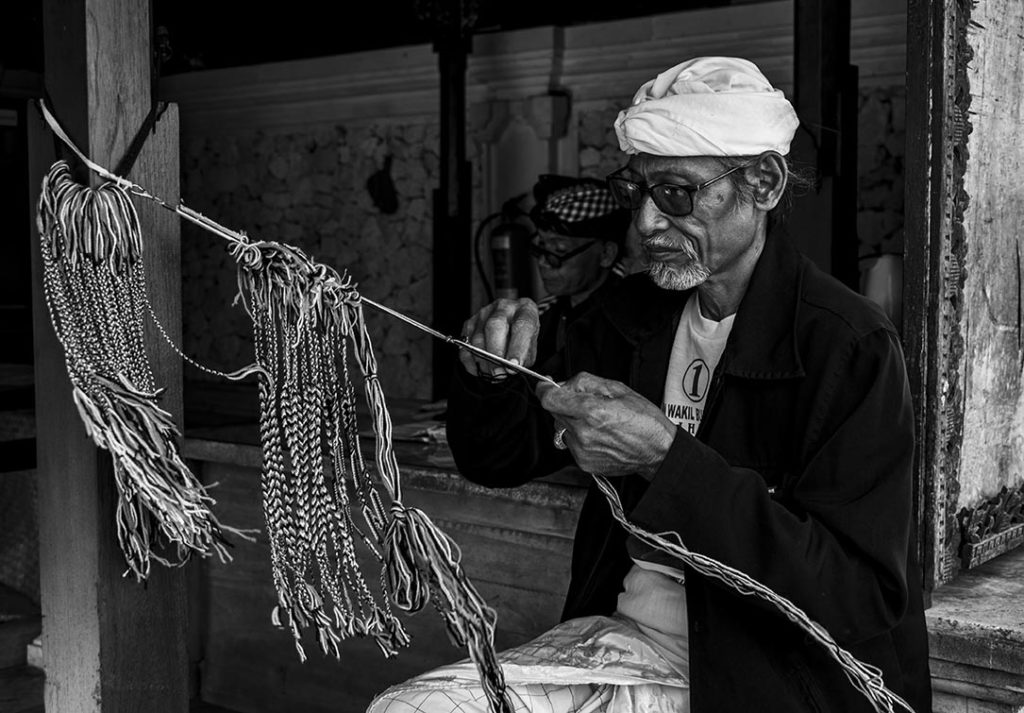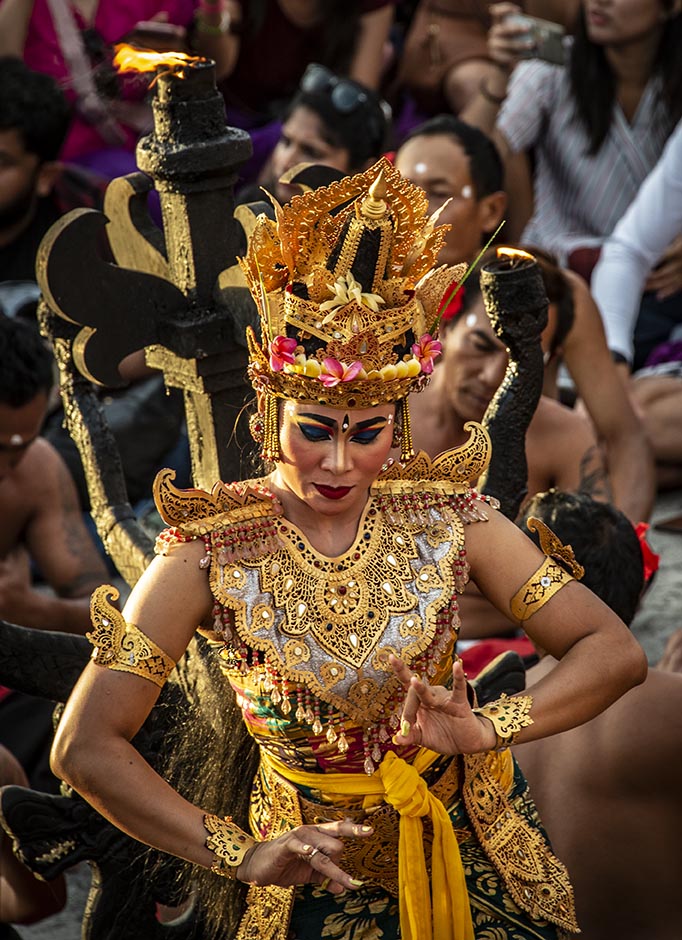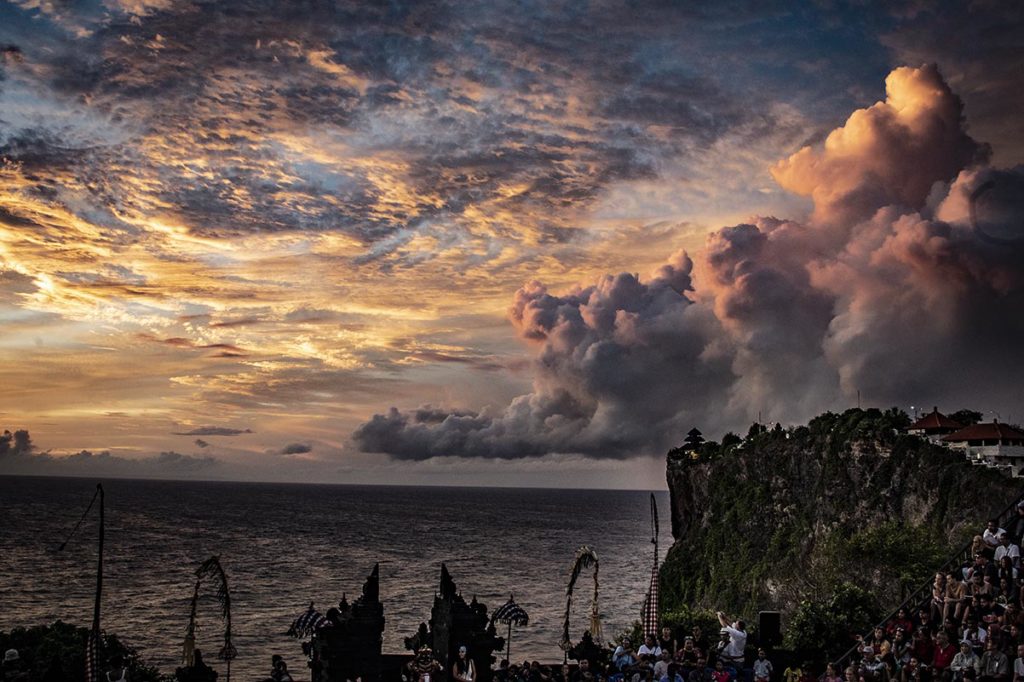Bedtime, Barongs and Celebrating Bali Culture
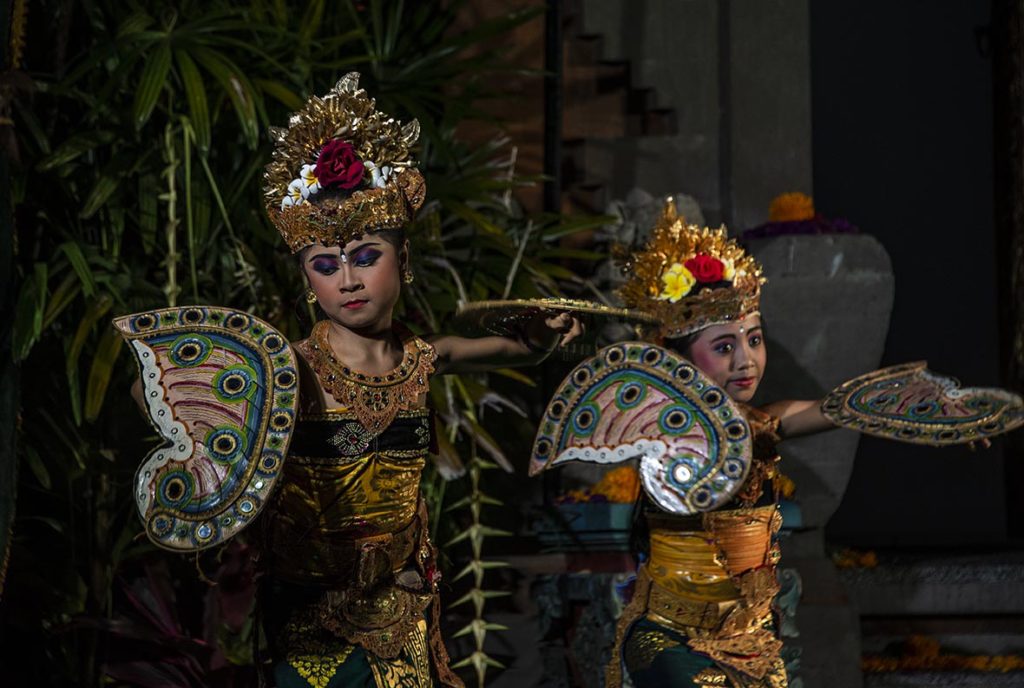
It’s February 23 and it’s the day after the birthday of the temple around the corner—thank goodness. I don’t have to go running out for photos of the events. Maybe tonight we can even get a full night’s sleep.
This temple happens to have a congregation of over a thousand families, the largest in the Ubud area. It’s a big deal. For the past five days throngs of people have brought offerings to the temple—think platters and bowls stacked with pineapple, papaya, mangosteen, oranges and even the exotic (to Bali) apple, pear or grape. Flowers, rice, bread, even packaged foods are placed in decorative heaps in beautifully woven, hand painted, gilt and even beaded bowls and carried on women’s heads to the temple where they are stacked until after prayers and then taken home again—where they are eaten by the family who brought them.
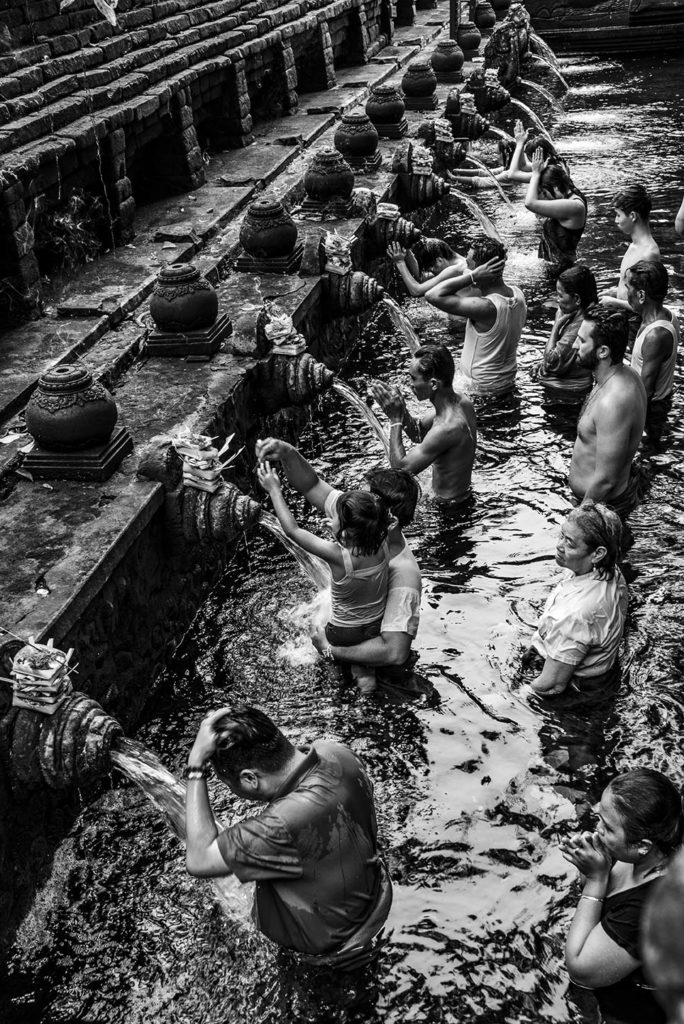
The processions are a lovely part of Balinese culture, one I’ve already written about here, but there are many more lovely parts of this island. First of all, there are the numerous temples so that there seems to be one around every corner. Some are locked off to foreigners, but many have opened their doors—at least partially. Take for example, the lovely water temple, Tirta Empul, that offers Balinese and foreigner alike the opportunity to cleanse themselves in purified water from holy springs as well as the chance to cleanse their minds in the quiet corners listening to the priest’s bells that act as a focus to prayers.
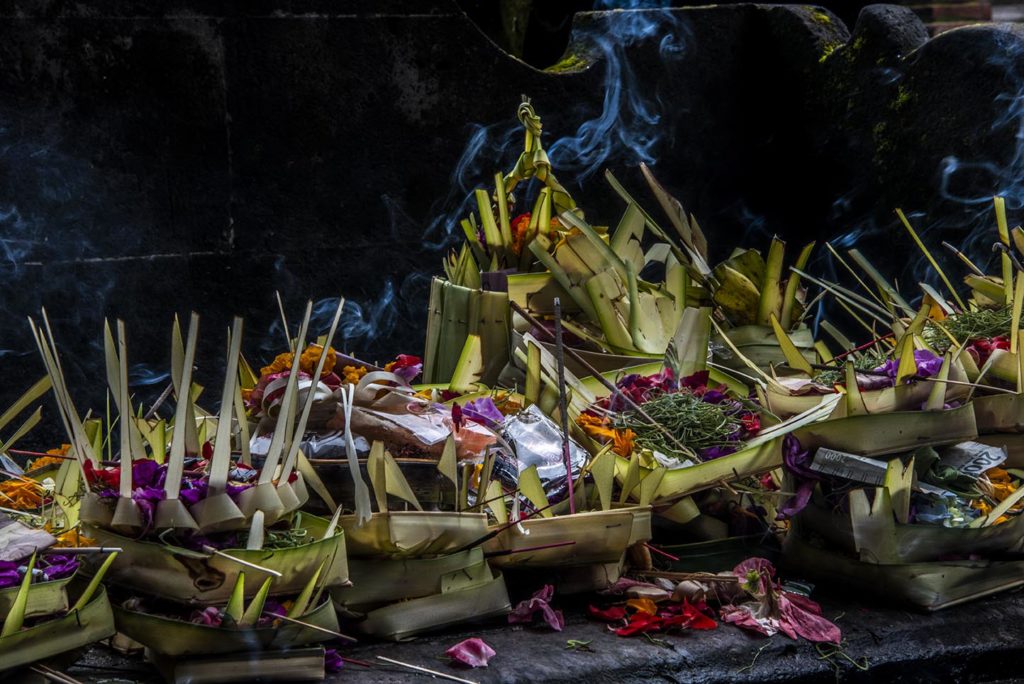
Probably the first moment of ceremony that I stumbled over in Bali was a small woven basket with flowers blossoms, a bit of fruit, rice and incense left in a doorway that I literally stumbled over as I went out one morning. These bits of beauty are everywhere, placed there daily usually by a housewife carrying a wicker tray of such things. They stop at shrines or seemingly nondescript places or at gates or doorways and quietly light an incense stick, place it in the basket of blooms and place the whole thing at the doorway. A single exquisite flower bloom held in the point of their fingers as they say a short prayer and then the blossom is placed in the basket, too. And then the woman moves on to the next spot they wish to make offering to. Each day the pavement is littered with flowers and each morning they are swept up and replaced with the same quiet attention to recognizing the precious places around them. It’s a lovely recognition of the sacred in all places.
The birthday of the local temple wasn’t quite so quiet. First came the processions down the street. They are special for this temple because of the stature and age of the temple. Each one is a procession from another temple that has a relationship with this one. Some arrive from close by, but others come by truck from far away and form their procession a few miles away. Each one brings with them their good and evil demons and, more importantly, their holy barong.
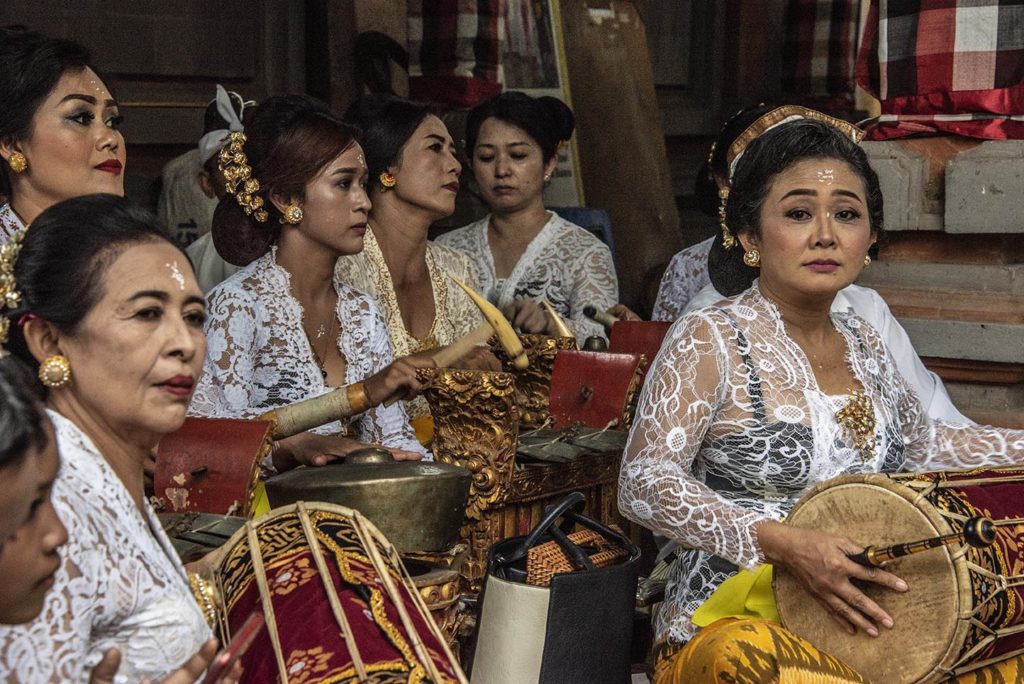
A barong is an important Bali spirit. My local informants couldn’t really say where the barong came from, though they think the roots could be in the Chinese dragon, but I wonder if it might have a heritage in the now extinct Balinese tiger, because the creatures have fur coats (some striped) and vaguely cat-like features and when they dance, their movements remind me of cats, too. Either way, there is power in the barong and they reside in various temples. Some barong have ancestral relationships with the neighbourhood temple and so they have been brought from very far away.
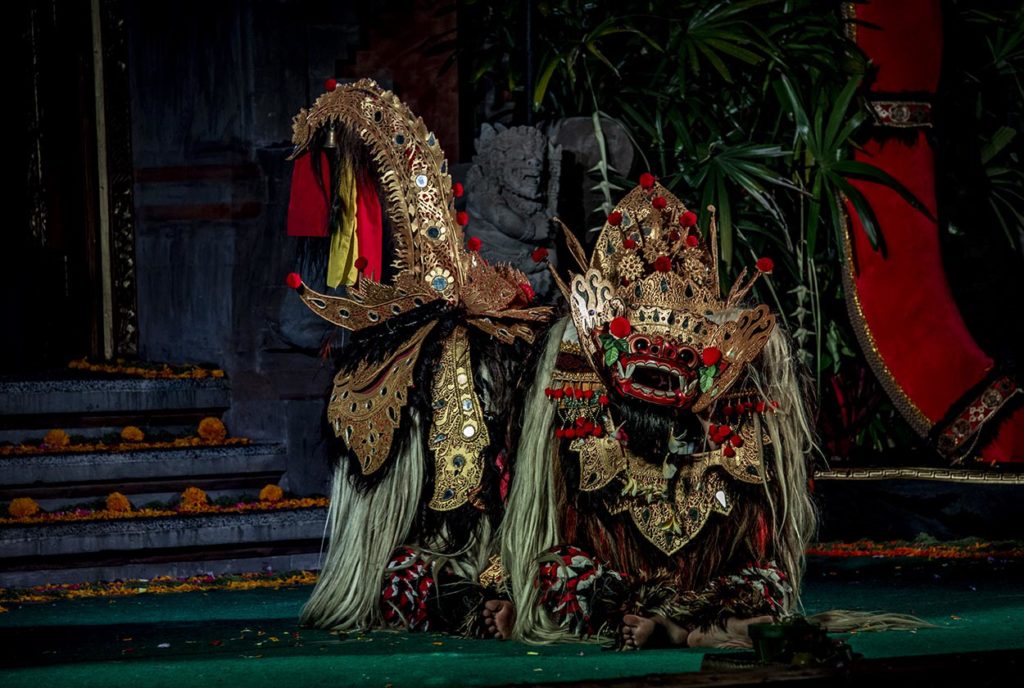
Which brings me to the sleepless nights.
Barongs don’t travel alone and they don’t travel silently. Every barong travels with his own orchestra of flutes and drums and—wait for it—gongs. These are pie plate sized and worn like a xylophone, or two – three feet across and carried by two men, or even three gongs on a cart that is wheeled along with the gong player seated in the middle. It’s a regular cacophony of drums and gongs—lovely to listen to except at 3 am.
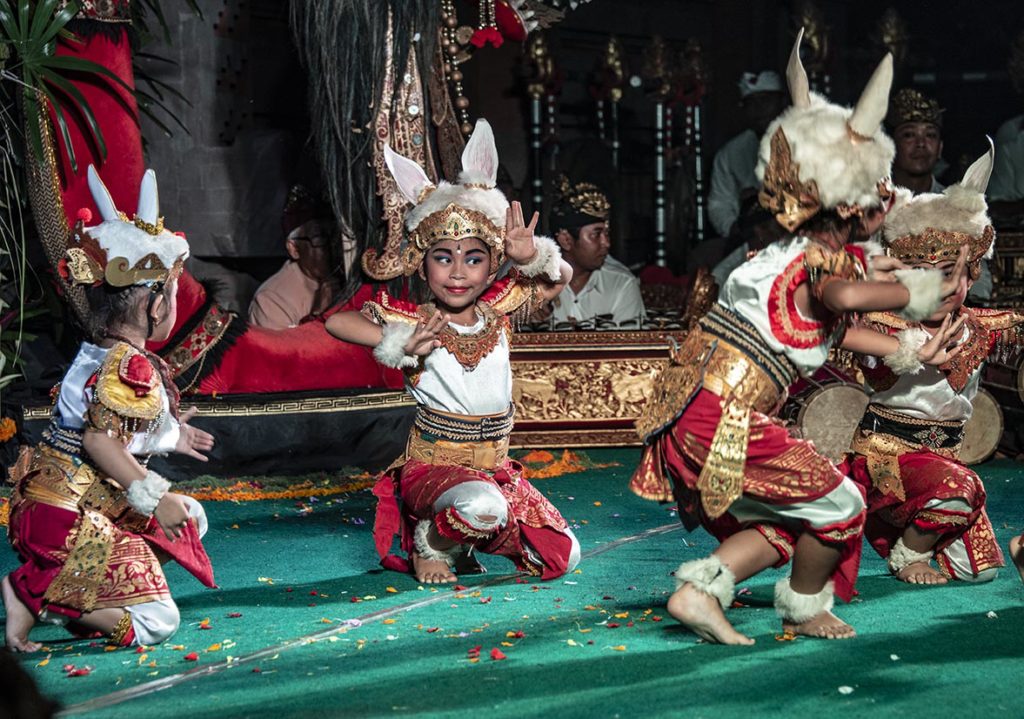
So the temple ceremonies took place over three days and the barong processions occurred where and when the temple priests decided. That meant traffic havoc for Ubud because the three main roads in the town would have to shut down. Each evening at the temple, there was a performance, the first night of dancers and orchestras, the second of dancers, orchestras and a stage barong (as opposed to the holy temple barong.) Each of these sessions was wonderful, with the dance and the music and I stayed taking photos until 9 or 10 pm, but the performances went on long into the wee hours after I got home and of course sound travels…
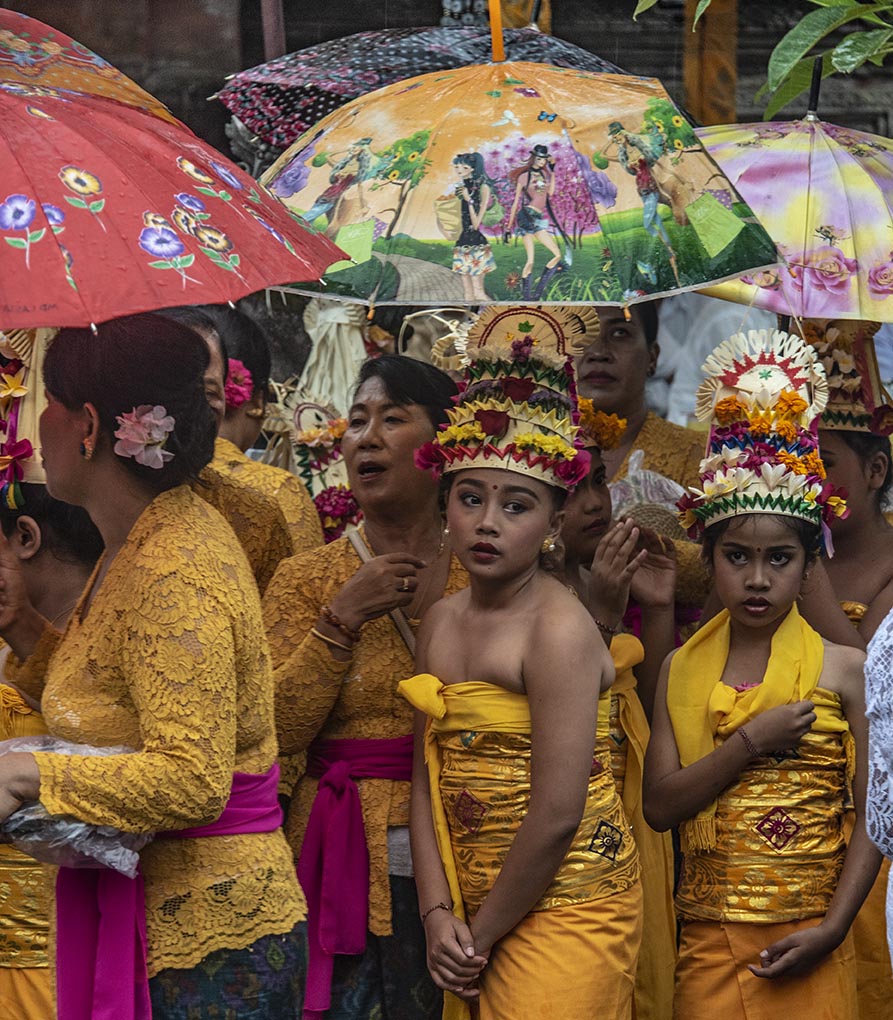
The third night was the finale: a public performance of dance and barong dancing using the true temple barong. At 8:30 the first of the dancers danced and then the first barong performed—a halting dance of a great beast cautiously treading through the land. The dance ended and they brought out the second barong who was every bit as cautious.
Okay. I’d seen the holy barong dance.
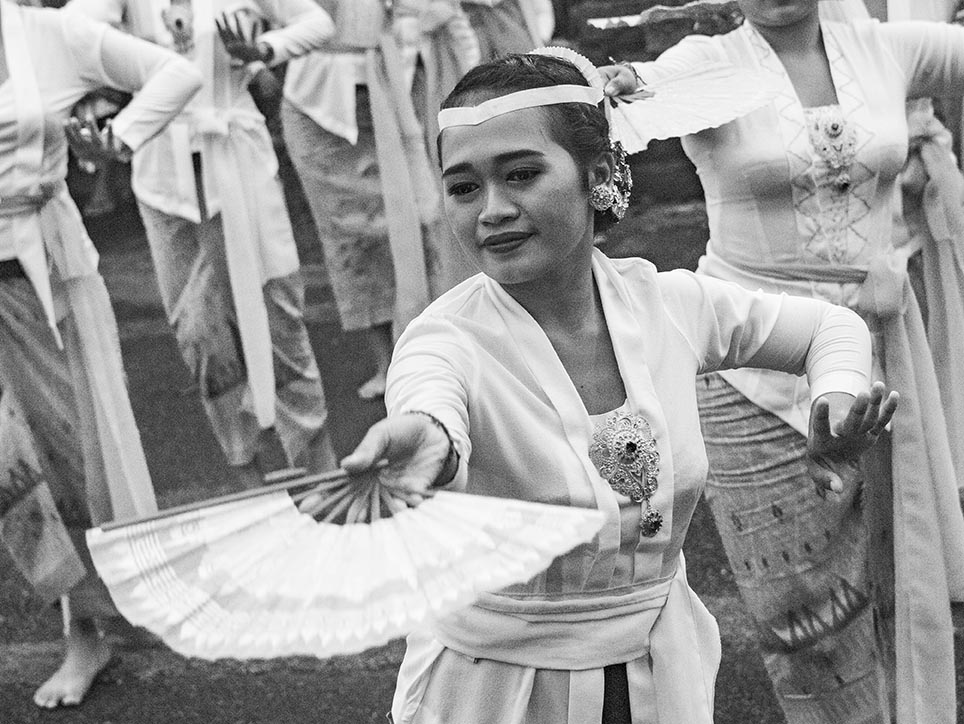
Okay, I’d seen the holy Barong–I thought. But I was tired and the performance was, I must admit, a little underwhelming. So I decided to call it a night and went home. Only to be disturbed as I was falling asleep by the horrible sounds of beast roars and narrated screaming.
Clearly, I had gone home at the wrong time. Clearly the barong had come upon a warrior and the battle had been begun. There was music and more roaring but I must have been very tired because I finally fell asleep—only to be woken a second time at about 3 am by the sound of drums and music in the street.
I tracked it from my bed: Approaching from the temple eastward and drawing even with my guest house gate and then heading westward down the street.
The sound of a vanquished barong headed home.
For all I love the Bali culture, I appreciated that I could finally sleep in peace.
